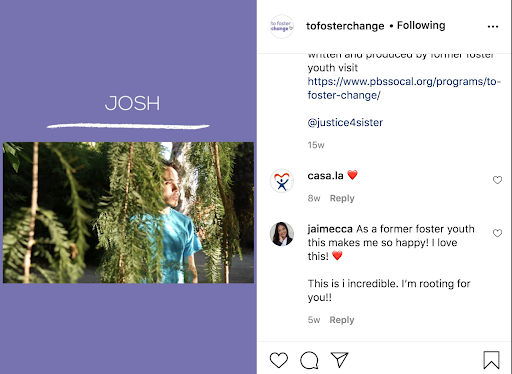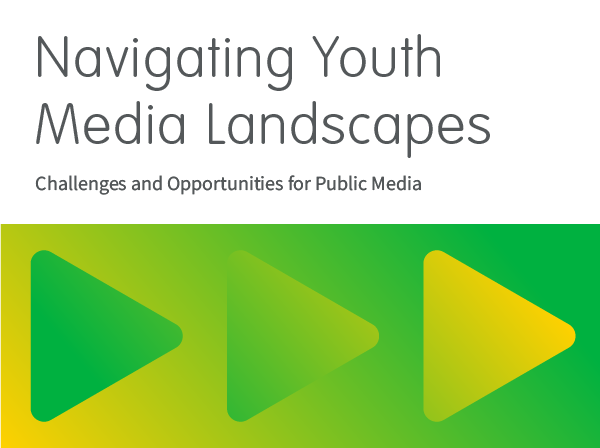The following post is part of a series springing from the Cooney Center’s joint initiative with the Corporation for Public Broadcasting, By/With/For Youth: Inspiring Next Gen Public Media Audiences. This is a project aimed at exploring the role of public media in the lives of young people by taking stock of the current landscape and imagining a future that public media can build alongside teens and tweens. With that in mind, we are inviting public media practitioners who are already experimenting and exploring with young audiences to reflect on their experiences and share their perspectives. We hope these posts will spark conversation, provide direction and resources, and raise up examples of the innovative work that public media stations across the country are creating to engage the next generation.
Media companies around the world are finding out that when it comes to capturing the attention of youth, authenticity (or at least a sense of it) equals relevancy. Anyone who has worked in a middle or high school setting can also confirm that teenagers are human lie detectors, unafraid to call out a lack of genuineness when they see it. Armed with this realization, content creators and distributors continue vying for this group’s attention, through ever-changing media platforms in an increasingly interconnected digital space.
For public media—locally based, mission-driven, and community-funded—the pace and cost of pursuing this wary audience from platform to platform is hard to keep up with. We’re convinced we have value, but most of what we offer, however authentic it may be, remains on the fringes of young people’s consciousness. We know, too, that we tend to lose this youth audience when they grow out of PBS Kids, even if they return for PBS NewsHour as they grow older.
How can public media make genuine connections with a youth audience? An approach that has worked well for us at PBS SoCal and KCET is creating with them: meeting youth where they’re interested, consistently supporting their development, and then stepping back and letting the young person’s voice be the loudest.
We employed this method with a project called To Foster Change, a four-year, grant-funded initiative to explore and improve the life outcomes of foster youth. A key element of the initiative (alongside long-form content and convening experts and thought leaders) was a media-creation program for former foster youth called Youth Voices. We found that the content co-created by youth in the program deeply resonated within and beyond the foster youth community and achieved the most notable multi-platform reach of the initiative.

Youth Voices featured artistic expressions of the participants’ experiences in foster care. With the training and support of a creative media professional, each participant created short video pieces, telling their own story, their way. Our organization then shared their video pieces across our platforms (our website, on social media, and in some cases, on-air). The pieces received enthusiastic and contagious support, with viewers sharing and commenting heartfelt notes to the participants.
Screenings of the video pieces bubbled with excitement, the emoji reactions on social media were an education for our staff, and the participating youth expressed deep gratitude for the opportunity to create something that represented them and that they were proud of.
So, what was the secret? To frame what we saw work with this program, we refer to the model of Connected Learning (CL). The model asserts that “Learning is irresistible and life-changing when it connects personal interests to meaningful relationships and real-world opportunity.” Using CL’s language to examine the Youth Voices program has helped us both frame the program’s success and find a formula for future projects.

Filmmakers and mentors at Youth Voices film screening.
To gauge interest, we engaged with the community we wanted to reach by directly asking if they wanted to be involved. From posting on social media platforms where youth were present to asking youth whether they had friends with an interest in media making—we left no stone unturned. Next, we heavily emphasized the development of a mentor-mentee relationship between media professionals and youth. We hired experts who were empathetic, came from diverse backgrounds, and had a desire to amplify a young person’s voice, not their own. Once youth were empowered with the tools and support to complete their pieces, our station provided the real-life opportunity to share their work with audiences both online and on-air.
We truly believe the approach of creating with the audience you want to connect to, or whose story you want to tell, is critical to the final product’s ultimate authenticity. For connecting with a youth audience, the CL model has helped us frame this conviction, while also providing insightful research and a robust community of practice from which to glean. As we continue working to fulfill our mission as a local public media organization, we know we will often return to the Connected Learning model to guide our work, especially with tweens and teens.
 Keena Levert is the Director of Engagement at Public Media Group of Southern California, leading engagement strategy, initiatives, and events as well as stewarding key organization and community relationships. With an eye toward innovative engagement tactics, deep community partnerships, and Southern California’s rich arts, cultural and nonprofit resources, she has led over 70 engagement campaigns in her almost 7-year tenure with PMGSC. Keena has also administered the organization’s community councils, a group of 100+ cross-sector leaders that represent diverse communities, since 2015.
Keena Levert is the Director of Engagement at Public Media Group of Southern California, leading engagement strategy, initiatives, and events as well as stewarding key organization and community relationships. With an eye toward innovative engagement tactics, deep community partnerships, and Southern California’s rich arts, cultural and nonprofit resources, she has led over 70 engagement campaigns in her almost 7-year tenure with PMGSC. Keena has also administered the organization’s community councils, a group of 100+ cross-sector leaders that represent diverse communities, since 2015.
 Ashley Gain is the Engagement Manager at Public Media Group of Southern California. She led youth engagement and workforce development for To Foster Change, bringing experience working in risk prevention and resilience during adolescence to develop long-term programs to serve foster youth in Southern California. She currently manages a portfolio of engagement work, aiming to connect PMGSC to serve the needs of local audiences.
Ashley Gain is the Engagement Manager at Public Media Group of Southern California. She led youth engagement and workforce development for To Foster Change, bringing experience working in risk prevention and resilience during adolescence to develop long-term programs to serve foster youth in Southern California. She currently manages a portfolio of engagement work, aiming to connect PMGSC to serve the needs of local audiences.




